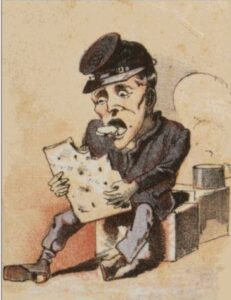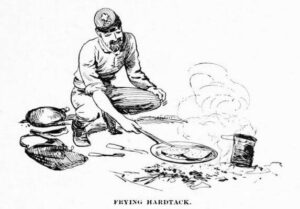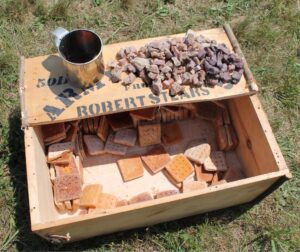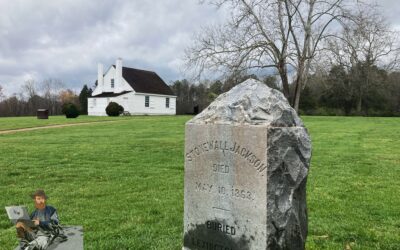During the Civil War, soldiers faced a number of challenges, from the dangers of combat to the difficulties of living in harsh conditions. One of the biggest challenges was finding enough food to sustain themselves. Both Union and Confederate soldiers struggled to find adequate food supplies, and what they did find was often of poor quality. One of the staples of their diet was hardtack, a hard, dry biscuit that was essential for their survival.
Origins of hardtack
Hardtack has a long history, dating back to ancient times when it was used as a staple food by sailors, soldiers, and travelers. In the United States, hardtack was a common food item during the Civil War, due to its low cost and ability to be stored for long periods of time.
According to Civil War historian William C. Davis, hardtack was made from a simple recipe: “It consisted of flour, water, and a little salt, mixed into a thick dough and baked until it was hard as a brick.”
Civil War Soldiers’ thoughts on hardtack
Despite its durability and practicality, hardtack was not a popular food item among Civil War soldiers. In fact, many soldiers complained about its taste and texture.
Union soldier John S. Jackman wrote in his diary in 1863, “Nothing but hardtack and sowbelly. Our hardtack is so hard that we have to soak it in water or coffee to make it eatable.” Confederate soldier Sam Watkins had a similar experience with hardtack, writing in his memoirs that it was “harder than a hickory nut and not half as good.”
 The 2nd United States Sharpshooters marched with the rest of the Army of the Potomac in pursuit of Robert E. Lee after Gettysburg. By July 23, they arrived in Front Royal, Virginia after several weeks of hard marching. Sergeant James Mero Matthews, Company D, remembered him and the rest of his men as incredibly hungry from the march. Without rations for several days, the men of the regiment began chanting “Hardtack! Hardtack! Hardtack!” just so they could get something to eat. This chanting drew the attention of Brigadier General John Henry Hobart Ward, but not pleased with the misbehavior. He drew his pistol and shouted “G__ D_____ your souls to hell! The next man that says ‘hardtack’, I will put daylight right through him.”
The 2nd United States Sharpshooters marched with the rest of the Army of the Potomac in pursuit of Robert E. Lee after Gettysburg. By July 23, they arrived in Front Royal, Virginia after several weeks of hard marching. Sergeant James Mero Matthews, Company D, remembered him and the rest of his men as incredibly hungry from the march. Without rations for several days, the men of the regiment began chanting “Hardtack! Hardtack! Hardtack!” just so they could get something to eat. This chanting drew the attention of Brigadier General John Henry Hobart Ward, but not pleased with the misbehavior. He drew his pistol and shouted “G__ D_____ your souls to hell! The next man that says ‘hardtack’, I will put daylight right through him.”Newspapers from the Civil War era often featured stories about the hardships faced by soldiers, including their lack of food and poor living conditions. Many articles mentioned the prevalence of hardtack in the soldiers’ diet. An article in the New York Times from August 1861 described hardtack as “a round, hard, brown disc that requires a good deal of toothwork to reduce it to a digestible consistency.” Another article in the Daily Dispatch, a Confederate newspaper, described hardtack as “an article of food which even the dogs refuse to eat.”
Historians have offered varying opinions on the significance of hardtack during the Civil War. Some see it as a symbol of the hardships faced by soldiers, while others view it as a practical solution to the problem of feeding large armies. According to historian James M. McPherson, hardtack was an important source of sustenance for soldiers on both sides of the conflict. “Hardtack was one of the most basic and essential items in the soldier’s diet,” he writes in his book, “For Cause and Comrades: Why Men Fought in the Civil War.”
Despite the hardships faced by soldiers, many of them found ways to make the best of their situation. Some soldiers tried to improve the taste of their hardtack by adding various ingredients to it. According to an article in the New York Times from 1863, soldiers sometimes added sugar or molasses to their hardtack to make it more palatable.
Civil War Hardtack Recipe
Although hardtack is not a popular food item today, it is still possible to make it using the same recipe that was used during the Civil War. Here is a recipe for Civil War hardtack:
4 cups of flour
1-2 cups of water
1 teaspoon of salt
Instructions:
- Preheat the oven to 375°F.
- In a large mixing bowl, combine the flour, water, and salt. Mix well until the dough becomes stiff and holds together.
- Roll the dough out to a thickness of about 1/2 inch.
- Cut the dough into 3-inch squares.
- Use a fork to poke several holes into each square to allow steam to escape during baking.
- Place the squares on a baking sheet and bake for 30-40 minutes or until they are hard and dry.
- Let the hardtack cool completely before storing in an airtight container.
While this recipe may not be the most delicious, it is a fascinating glimpse into the difficult and unappetizing conditions that Civil War soldiers endured. Hardtack may have been a basic and necessary part of their diet, but it was also a symbol of the sacrifices and hardships that they endured in the name of their cause.
citation: Gettysburg National Military Park, Hardtack, Facebook, 20 Sept. 2020, https://www.facebook.com/GettysburgNPS. Accessed 5 April 2023





0 Comments